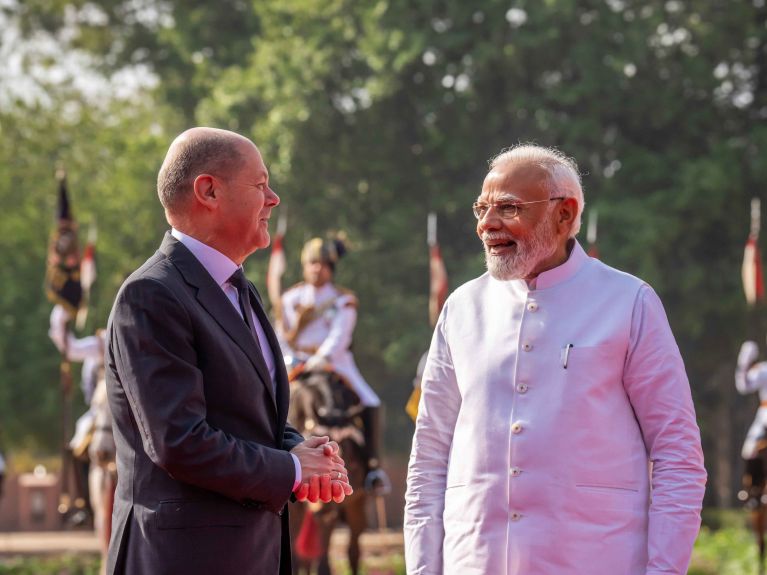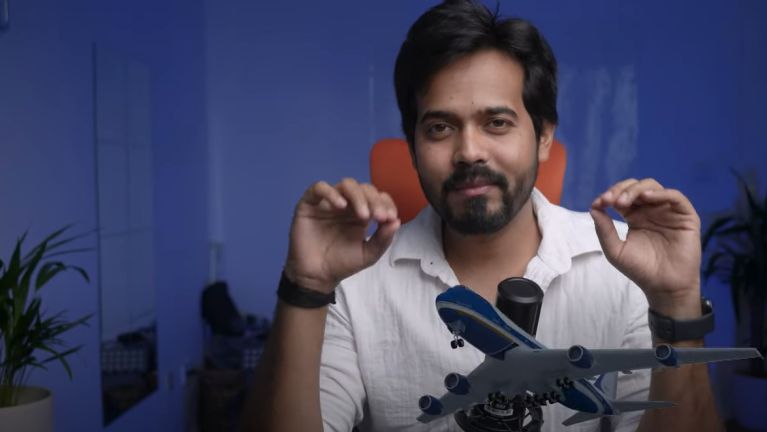10 facts about German-Indian relations
While Germany and India are vastly different in terms of their size and populations, they share more connections than you might think.

Germany and India side by side
At over 3.2 million square kilometres, India is roughly 9 times larger than Germany which covers just under 360,000 km2. In 2022, India’s population of 1.4 billion was 17 times larger than Germany’s 83.4 million.
Constitution and government
Both countries are parliamentary democracies and federal republics. India achieved independence from the United Kingdom on 15 August 1947, while the Federal Republic of Germany was founded on 23 May 1949. Amongst others, multilateralism is a key principle for both countries.
Leading economies
Germany is the world's fourth-largest economy, after the USA, China and Japan. In 2022 India was right on their heels in fifth place. Germany is India’s most important trading partner in Europe and one of India’s top 10 trading partners worldwide.
Diplomatic relations
The two countries opened diplomatic relations in 1951. India was one of the first countries to recognise the Federal Republic of Germany diplomatically after the Second World War.
Engagement in the Indo-Pacific region
India is one of Germany’s most important partners in the Indo-Pacific. Federal Chancellor Olaf Scholz reiterated this point at the G7 summit in Japan in May 2023. Germany’s Indo-Pacific guidelines commit the country to greater engagement in the region. Major trade routes run through the Indo-Pacific, but at the same time it faces conflicts which are significant to the whole world. India has also called for a rules-based order in the Indo-Pacific.
Important consultation formats
The sixth German-Indian government consultation took place in Berlin in May 2022. Germany undertakes these consultations with only a few major partners. During the talks Federal Chancellor Olaf Scholz and Indian Prime Minister Narendra Modi signed a statement of intent for a partnership on green and sustainable development. The two countries want to work together through triangular co-operation with countries in Africa and Asia to support climate-friendly development. Germany and India agreed the Agenda for the German-Indian Partnership in the 21st Century in the year 2000. Over 30 different formats for consultation and dialogue are in place, a symbol of how closely the two countries share ideas and values.
Dieses YouTube-Video kann in einem neuen Tab abgespielt werden
YouTube öffnenThird party content
We use YouTube to embed content that may collect data about your activity. Please review the details and accept the service to see this content.
Open consent formSought-after skilled workers
Germany needs skilled workers. In the IT sector alone, according to figures from the German Economic Institute, there were almost 70,000 vacancies during 2022. In order to make it easier for computer specialists to move to Germany, the Federal Government aims to clear away bureaucratic obstacles. These include removing the automatic requirement for a certain level of German language skills, and making it simpler to get a visa. “I’m absolutely certain that many will take advantage of these opportunities and want to work as skilled professionals in Germany,” said Federal Chancellor Olaf Scholz on a visit to India in February 2023. As it happens, India currently leads the list of workers around the world who are interested in finding a job in Germany.
A passion for German
India is one of the leading countries in terms of the number of branches of the Goethe-Institut. On the Subcontinent, Goethe-Instituts are called “Max Müller Bhavans” after the German indologist Max Müller. Every year, over 20,000 people take German courses at the six bhavans in New Delhi, Kolkata, Chennai, Bengaluru, Mumbai and Pune. In 2020, around 211,000 people learned German in India, and the trend is going up.
Close scientific partnership
Germany is India’s second most important research partner after the US. The German Centre for Research and Innovation in New Delhi is a beacon of this partnership. It was opened in 2012 and is one of six such centres around the world.
Sought-after place to study
Almost 34,000 students from India were enrolled at German higher education institutions during the 2021/22 winter semester, compared to only 5,700 ten years before. According to data collected for “Wissenschaft weltoffen”, no other country which has significant levels of international mobility has seen such rapid development. Indian students are the second-largest group of international students at German higher education institutions. Even during the pandemic, the numbers continued to rise. One distinctive feature of Indian students in Germany is their above-average level of interest in STEM subjects.


